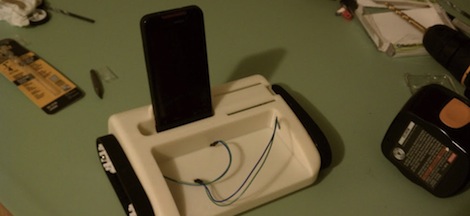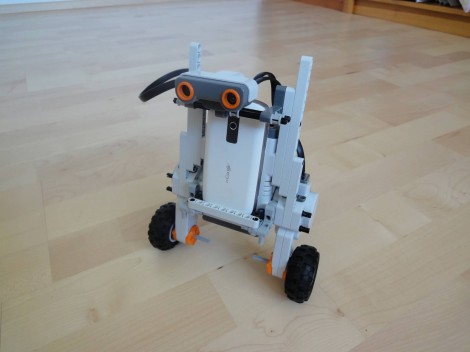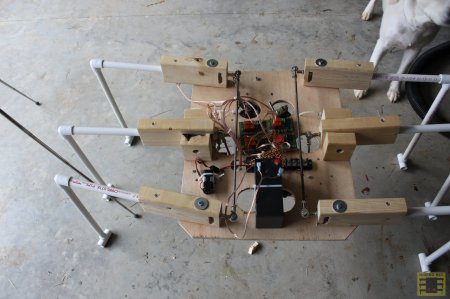We have no idea why, but since we featured Botiful, the Android-powered telepresence robot a few days ago, the tip line has been awash in robot/Android mashups. Here’s a few of the cool ones.
Using an Android as a remote control
[Stef] used a Samsung Galaxy S3 to control an old rc tank. The Android sends accelerometer and gyro data over Bluetooth to an Android where it powers a pair of H-bridges to turn the wheels.
Turning Android into a Robotic Operating System
ROS, or the Robot Operating System, provides a bunch of utilities for any type of robot such as point-cloud mapping to multi-joint arm control. [Lentin] sent in a guide on installing ROS on Android. So far, he can get accelerometer data, stills from the on-board camera, have the robot speak and use the small vibrator motor. Here’s a (somewhat limited) demo of [Lentin] playing with ROS in a terminal.
“Just a quick procrastination project”
Last May, [Josh] wrote in asking if a tread-based robot controlled through Skype would be a cool idea. We said ‘hell yeah’ and [Josh] scurried off to his workshop for a few months. He’s back with his tank-based robot. One really interesting bit is the robot responds to DTMF tones, allowing it to be controlled through Skype without any additional hardware. That’s damn clever. You can see a video of the SkypeRobot after the break.

















